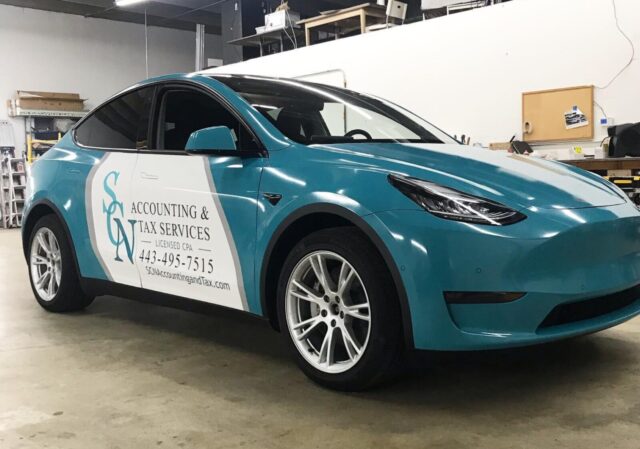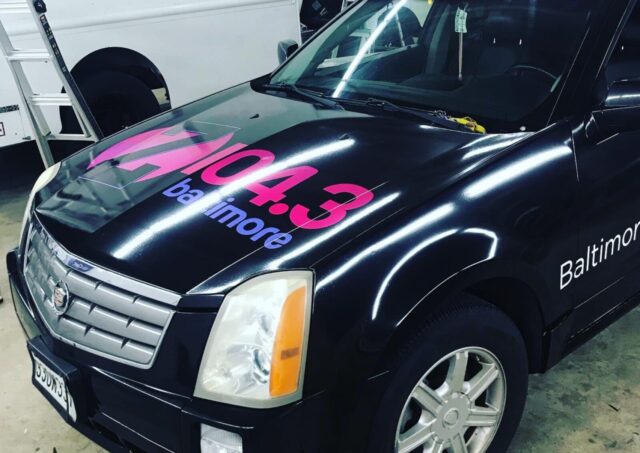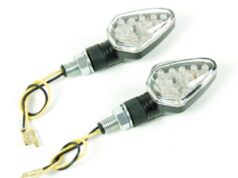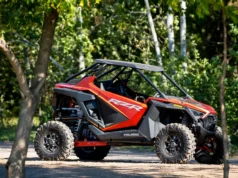
Commercial vehicle wraps are increasingly becoming an indispensable tool in the arsenal of many businesses for advertising and branding purposes. Simply put, a vehicle wrap is a vinyl graphic applied over the vehicle’s original paint, effectively transforming the vehicle into a mobile billboard. Why is understanding how these wraps perform in different climates essential?
Primarily because the durability, longevity, and overall appearance of the wrap can be significantly impacted by various weather conditions. The better we understand this impact, the better equipped we are to maintain the wrap, thereby ensuring that it serves its purpose effectively.
Understanding the Composition of Commercial Vehicle Wraps
Commercial vehicle wraps are primarily composed of vinyl, a type of plastic known for its durability and flexibility. The vinyl is often laminated to protect the printed graphics from fading, scratches, and other forms of wear and tear. The characteristics of the vinyl and the laminate largely determine how the wrap responds to different weather conditions.
Vinyl is naturally resistant to moisture and fairly tolerant of a wide range of temperatures, which is why it is commonly used in outdoor applications. However, extreme weather conditions can still have an impact, causing the vinyl to expand or contract, or the colors to fade over time.

Impact of Extreme Heat on Commercial Vehicle Wraps
Extreme heat poses one of the biggest challenges to the longevity of commercial vehicle wraps. The science behind this lies in the properties of vinyl – heat causes the vinyl to expand, and over time, this constant expansion and contraction can lead to the wrap warping or developing bubbles.
Moreover, the effect of UV radiation in hot climates cannot be understated. UV radiation can cause colors to fade, especially if the vehicle is regularly exposed to direct sunlight. It is for these reasons that businesses operating in hot climates, like Arizona or Nevada, often report quicker signs of wear and tear on their vehicle wraps.
For maintenance in hot climates, regular cleaning is crucial, as dust and dirt can further absorb heat and amplify the damaging effects. Using a protective sealant that blocks UV radiation can also help protect the wrap’s colors from fading.
How Cold Weather Influences Commercial Vehicle Wraps
Just as extreme heat can affect vehicle wraps, so can extremely cold temperatures. When exposed to cold weather, the vinyl can contract, causing it to become brittle and more prone to cracking or tearing. This is particularly noticeable in areas with freezing winter temperatures, like Alaska or Northern Canada.
Furthermore, the chemicals used in de-icing roads can interact with the wrap, leading to discoloration and even deterioration over time. Therefore, taking care of vehicle wraps in cold conditions involves regular washing to remove harmful chemicals.
Also, when cleaning, ensure to use lukewarm water rather than hot water, as the sudden temperature change can shock the material and cause damage.

Effect of Humidity on Commercial Vehicle Wraps
Humidity, or the amount of moisture in the air, can also affect the performance and longevity of vehicle wraps. High levels of humidity can make it challenging to apply wraps due to the presence of excessive moisture. After application, in a high-humidity environment, wraps can be prone to premature failure, including peeling or bubbling.
This is why professional installers pay close attention to humidity levels when applying vehicle wraps. For those operating in high-humidity regions, it’s important to have wraps inspected regularly for signs of bubbling or peeling. Also, if possible, park vehicles in covered areas to reduce exposure to humid conditions.
Commercial Vehicle Wraps in Coastal Areas
Operating in coastal areas presents another set of challenges for vehicle wraps. The main culprits are saltwater and salty air, which can be corrosive over time. Over time, salt can degrade the adhesive used to stick the wrap to the vehicle, causing it to peel and deteriorate.
To maintain a wrap in a coastal setting, it is crucial to wash the vehicle regularly to remove any salt deposits. Moreover, applying a high-quality sealant can provide a protective barrier against salt and help extend the lifespan of the wrap.
Navigating Rain and Moisture with Vehicle Wraps
Rain and moisture present another element to consider when maintaining commercial vehicle wraps. Prolonged exposure to excessive moisture can lead to the wrap peeling, especially along the edges. This is particularly prevalent in regions with high rainfall.
To navigate these conditions, it is recommended to store vehicles indoors or under a protective covering whenever possible to keep them dry. Regular inspections for any signs of peeling or lifting, particularly after heavy rainfalls, can also help identify any issues before they become significant problems.

Dealing with Snow and Ice on Commercial Vehicle Wraps
Snow and ice, much like rain and moisture, can pose potential risks to vehicle wraps. The freezing and thawing cycle can cause the wrap to contract and expand, which may lead to cracking or peeling. Ice scrapers and other sharp objects used to remove ice from the vehicle can also damage the wrap.
To protect the wrap during icy or snowy conditions, avoid using ice scrapers or any abrasive tools on the wrapped surfaces. Instead, consider using a broom or a similar tool to gently remove snow and ice.
Understanding the Effect of Sunlight on Vehicle Wraps
Sunlight, or more specifically UV radiation, can lead to color fading and loss of wrap integrity. Prolonged exposure to UV radiation can degrade the pigments used in the wrap, causing them to lose their vibrancy over time.
To protect against UV damage, consider using wraps with UV protection. Some wraps come with UV-resistant coatings that can help prolong their lifespan. Furthermore, parking in the shade or in covered areas when possible can also help minimize exposure to sunlight.
The Role of Regular Maintenance in Different Climates
Regardless of climate, regular maintenance plays a critical role in extending the lifespan of vehicle wraps. This includes regular cleaning, preferably by hand, to remove dirt, chemicals, and other harmful materials. Regular inspections to check for signs of damage are also crucial.
Specific maintenance guidelines can vary depending on the climate, but a general rule is to be more diligent in extreme climates or conditions. For instance, in hot and sunny climates, the wrap may need to be washed and inspected more frequently due to increased risk of heat and UV damage.

Choosing the Right Commercial Vehicle Wrap for Your Climate
When selecting a wrap for your vehicle, it’s important to consider the climate in your region. Some wraps are designed to withstand extreme heat, while others are better suited for cold, wet, or humid conditions.
Speaking with industry professionals and thoroughly researching different wrap options can help you make an informed decision. Consider factors such as the wrap’s material, any protective coatings, the adhesive’s strength, and the manufacturer’s guidelines for maintenance and care.









